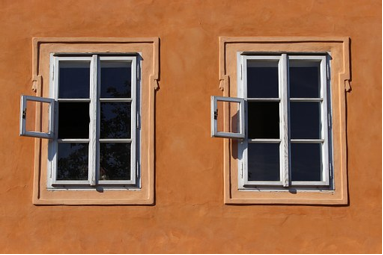Plastering and rendering both refer to the process of covering surfaces with plaster material. The main difference between the two lies in the location. Plastering is for interior surfaces while rendering is for exterior surfaces. Another difference is the material used. While the components of plastering materials are primarily the same, the ratio may differ according to the application.

Rendering
Rendering is common for exterior surfaces like walls. Rendering material often contains more cement for increased durability. Cement provides a decorative appeal to building exteriors and at the same time reinforces fireproofing and waterproofing.
Render mixture usually contains cement, sand, and other additives like gravel. Plastering materials can also come pre-mixed. For a smoother and excellent render, you can add lime gypsum to the mixture. Fine sand also creates a more decorative rendering finish to various surfaces.
Layers of render are applied to exterior walls and finished with a scraper. Depending on the preference of the building owner, the rendered surface can be finished smooth or textured. Textured render is preferred when in preparation for applying decorative materials like tiles.
Plastering
Plastering is common for interior walls and ceilings of homes and buildings. The composition of plaster contains little or no cement. The resulting finish is often smooth and flat to prepare for painting or wallpaper installation. Plasterboard for interior walls and ceilings provides the background surface for plaster. The following are different finishing techniques used on interior walls:
- Thistle board finish. Thistle board finish is gypsum based finish plaster used in producing high-quality interior walls.
- Thistle hardwall. Another example of gypsum-based plaster finish, thistle hardwall is ideal as an undercoat in masonry.
- Thistle magnetic plaster. Magnetic plaster is a speciality type of material that creates a magnetic surface ideal for kitchens and bedrooms.
Gypsum-based plaster is the preferred material used today. In most plastering projects, plasterboard creates the suitable surface to apply the desired decorative finish. Suppliers of gypsum-based plastering materials produce a variety of renders used in construction. For example, plasterers can use multfinish plaster, hardwall plaster, and spray finish plaster for interior surfaces and masonry.
Background surface
Aside from the plaster material itself, the background surface where plaster is applied also affects the results. Specific factors and characteristics of the background surface like the suction affect how well plaster adheres to it.
Suction is the ability of the surface to absorb water. Higher suction means better plaster adherence. If a surface has low suction, a liquid primer is sprayed to improve adhesive properties. Another option is to add bonding agents to the plaster mixture which aids in adhesion. Combining bonding agents allows the plaster to dry faster which requires quick plaster application.
Plastering beads are also used to enhance the connection of plasterboard corners. Plastering beads are often made with galvanised steel and added to edges and angles. Scrim tape is another accessory used in connecting plasterboard. In both applications, basecoat is applied to the corners to reinforce and strengthen the connections. Basecoat needs to dry completely before adding the first layer of plaster.
Leave a Reply